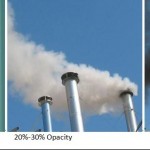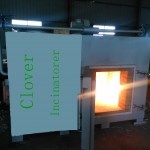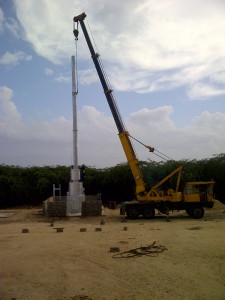Biomedical Waste Any solid or liquid waste which may present a threat of infection to humans including non-liquid tissue, body parts, blood or blood products and body fluids, laboratory and veterinary waste which contains human disease- causing agents, and discarded sharps (i.e. syringes, needles, scalpel blades).
Bottom Ash The course non-combustible and unburned material which remains at the burn site after burning is complete. This includes materials remaining in the burn chamber, exhaust piping and pollution control devices where such devices are used.
Burn Box A large metal box used to burn solid waste. Combustion air is usually supplied passively through vents or holes cut above the bottom of the box. An exhaust pipe or stack may or may not be attached.
Commercial Camp A temporary, seasonal or multi-year facility with a capacity greater than 15 people and which has been established for research, commercial or industrial purposes. A commercial camp does not include a traditional camp or field camp.
Commissioner’s Land Lands that have been transferred by Order-in-Council to the Government of Nunavut. This includes roadways and land subject to block land transfers. Most Commissioner’s Land is located within municipalities.
Contaminant Any noise, heat, vibration or substance and includes such other substance as the Minister may prescribe that, where discharged into the environment,
- endangers the health, safety or welfare of persons,
- interferes or is likely to interfere with the normal enjoyment of life or property,
- endangers the health of animal life, or
- causes or is likely to cause damage to plant life or to propert
Determined Effort The ongoing review of opportunities for reductions and the implementation of changes or emission control upgrades that are technically and economically feasible and which result in on-going reductions in emissions. Determined efforts include the development and implementation of waste management planning which is focussed on pollution prevention.
De Novo Synthesis The creation of complex molecules from simple molecules.
Environment The components of the Earth and includes
- air, land and water,
- all layers of the atmosphere,
- all organic and inorganic matter and living organisms, and
- the interacting natural systems that include components referred to in paragraphs (a) to (c) above.
Field Camp A temporary, seasonal or multi-year facility consisting of tents or other similar temporary structures with a capacity of 15 people or less and which has been established for research, commercial or industrial purposes. A field camp does not include a traditional camp or commercial camp.
Fly Ash Unburned material that is emitted into the air in the form of smoke or fine particulate matter during the burning process.
Hazardous Waste A contaminant that is a dangerous good and is no longer wanted or is unusable for its original intended purpose and is intended for storage, recycling, treatment or disposal.
Incineration A treatment technology involving the destruction of waste by controlled burning at high temperatures.
Incinerator A device or structure intended primarily to incinerate waste for the purpose of reducing its volume, destroying a hazardous substance in the waste or destroying an infectious substance in the waste. An incinerator has means to control the burning and ventilation processes.
Inspector A person appointed under subsection 3(2) of the Environmental Protection Act and includes the Chief Environmental Protection Officer.
Modified Burn Barrel A metal drum used to burn waste that has been affixed with devices or features which provide limited increased heat generation, heat retention and holding time.
Open Burning Burning of waste with limited or no control of the burn process. For clarity, open burning includes burning on the open ground or using a burn box or unmodified or modified burn barrel.
Qualified Person A person who has an appropriate level of knowledge and experience in all relevant aspects of waste management.
Responsible Party The owner or person in charge, management or control of the waste.
Smoke The gases, particulate matter and all other products of combustion emitted into the atmosphere when a substance or material is burned including dust, sparks, ash, soot, cinders and fumes.
Solid Waste Unwanted solid materials discarded from a household (i.e. single or multiple residential dwellings, other similar permanent or temporary dwellings), institutional (i.e. schools, government facilities, hospitals and health centres), commercial (i.e. stores, restaurants) or industrial (i.e. mineral, oil and gas exploration and development) facility. For clarity, solid waste does not include biomedical waste, hazardous waste or sewage sludge.
Traditional Camp A temporary or seasonal camp used primarily for camping, hunting, fishing or other traditional or cultural activities. A traditional camp does not include a field camp or commercial camp.
Unmodified Burn Barrel A metal drum used to burn waste that has not been affixed with devices or features which provide for enhanced heat generation, heat retention and holding time.
Untreated Wood Wood that has not been chemically impregnated, painted or similarly modified to improve resistance to insects or weathering.
Waste Audit An inventory or study of the amount and type of waste that is produced at a location.




